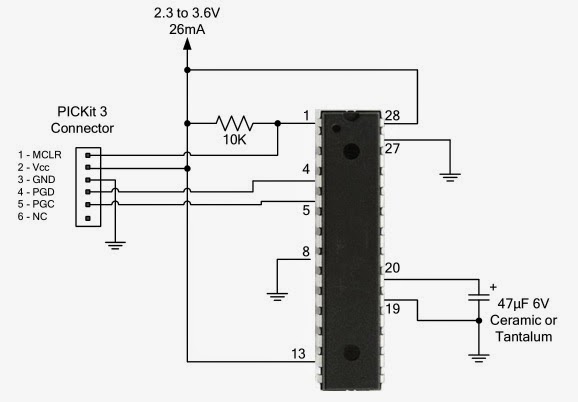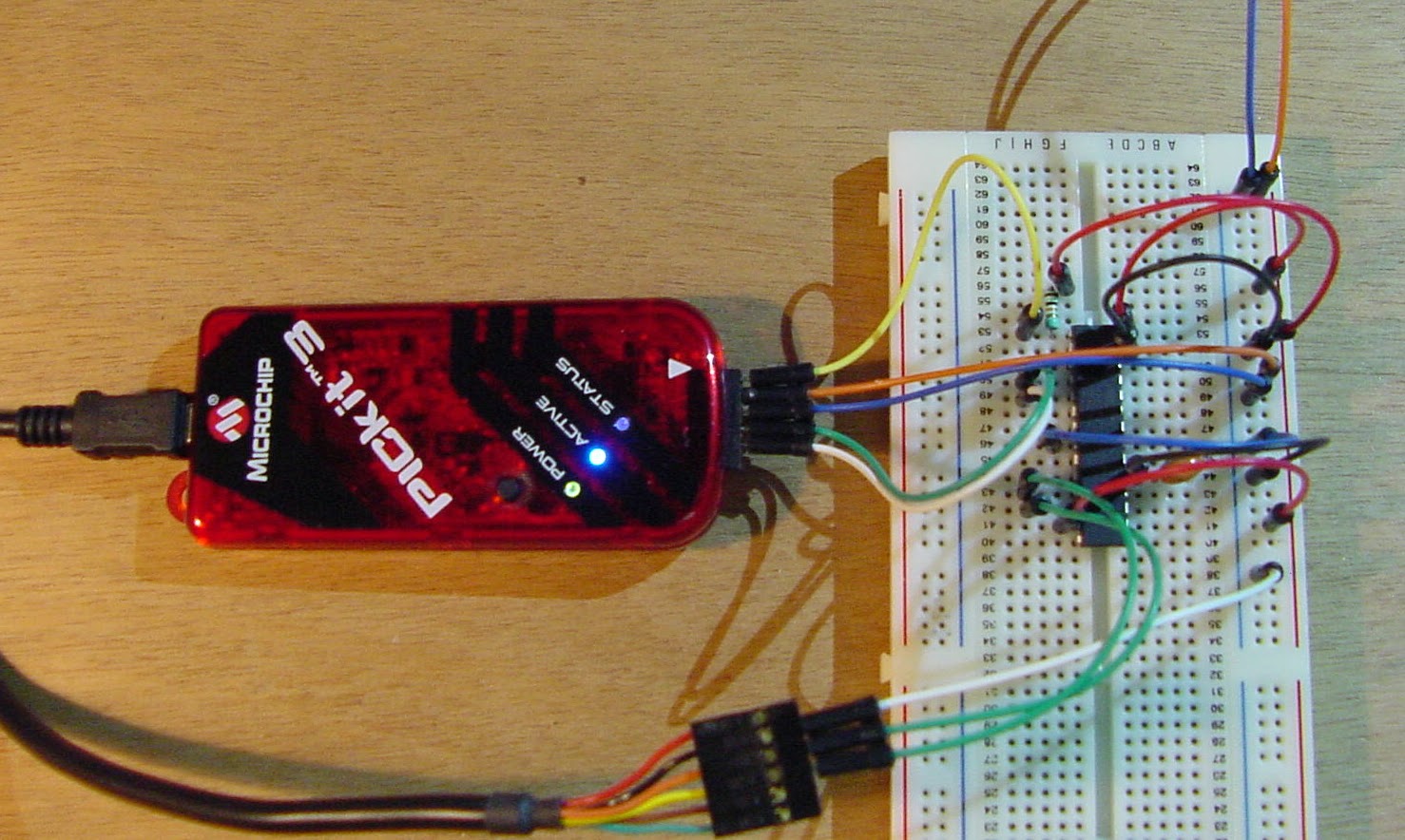First, we have to program a new PIC32MX170F256 chip of Microchip Technology. With 256K of flash and 64K of RAM, it offer now 80KB of non volatile flash memory for the program and 52KB of RAM for the variables : very confortable.
As usual, for the programming we need a little piece of hardware and the right software. A contactless breadboard is sufficient to do the job and, in my case, the Pickit3 programmer. We also have to respect the different connections like that is described in the document provided by Geoff Graham :
 |
| I uses the 28 DIP package. |
The new version (V4.6) of the Micromite Mk II Firmware is available here.
The most simplest way to program a PIC32 with the Pickit3 is to use the MPLAB® Integrated Programming Environment (IPE) available here. This software is very friendly and do the job without risks :
 | |
| The PIC32 is programmed! |
 |
| Easy! |
To do this test, I wrote this 'terrific' program :
A = 0;
DO WHILE A < 100000
A = A + 1
LOOP
 |
| Edited with the MK II integrated editor. |
It is what I used before with the MK I version to test the performance compared to my Tandy PC-2. The previous results was 23 secondes for the Micromite MK I and... 3 000 secondes for my PC-2!
And now, the same test gives us 11 secondes compared to the 23 secondes previously obtained with the MK I version. Very good, but this test is not 'really' representative of the reality because I just used a very common ressources of this Basic. Others complex instructions may be not as efficient like this. But as said Geoff Graham, the "40% faster" of the previous version must be obtained without doubt.
Conclusion : Micromite II is an even more powerfull system than the MK I version : fantastic!!!


Aucun commentaire:
Enregistrer un commentaire